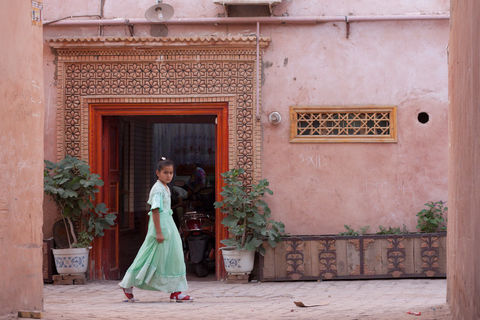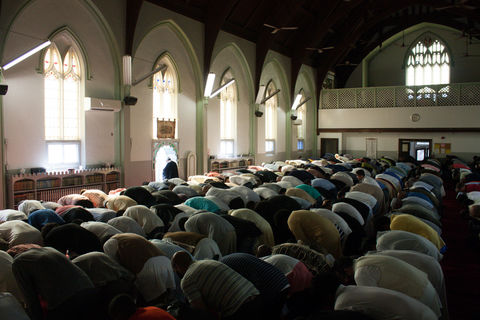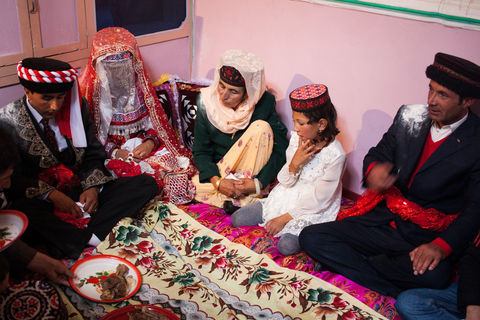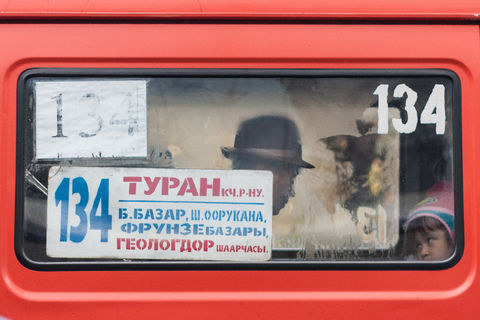Eid Celebrations in Kashgar and Almaty
Eid Al-Fitr and Eid Al-Adha are separated by 70 days. For Muslims, Eid Al-Fitr is the celebration of the end of Ramadan, the breaking of the fast. Eid Al-Adha commemorates Abraham's intent to sacrifice of his own son in which God intervened allowing Abraham to sacrifice a lamb instead. I was in Kashgar for Eid Al-Fitr and later encountered Eid Al-Adha in Almaty. These two are the most important holidays in the Islamic world.
Eid Al-Fitr at Kashgar
I still clearly recall the morning at Kashgar’s Id Kah Mosque. Having stayed at a hostel right by the Mosque we were within the lockdown zone determined by the police and were required to either stay in for the duration of the celebration or leave by 6:30am. I had to wake up very early to enter the square facing the Mosque. It was still completely dark since the police used Beijing Time which translates to 4:30am Xinjiang time. 1

The air was chilly in the early morning a contrast to the heat during the day. It was still early and the square was only lit by twilight. The mosque was open and few people lingering around the entrance. As the sun raises the volume of traffic gradually increased as time approached the beginning of the prayers. Just like each Friday prayers men carrying their pray rugs all walked in one direction as if the city was made of one way pedestrian streets. Around one hour before the prayers, there was enough human traffic to cause congestion at the entrance of the mosque. People continue to fill in making the mosque appear infinite in size. When the mosque became full prayers began placing their mats outside of the mosque, optimizing for shade then proximity to the mosque. Soon I was forced to move back so I weren’t blocking the Muslims.
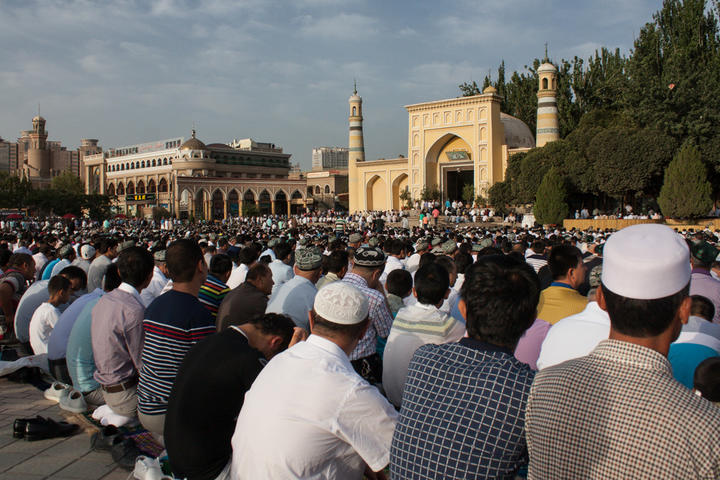
The prayer started with messages delivered by the Imam solely conducted in the Uyghur language. It was incredible to be totally silent in a wide open square filled with thousands of the people. Traffic was also lock down in the area of the mosque adding to the serenity. The unison movements of the prayers under silence were a humbling sight to witness.

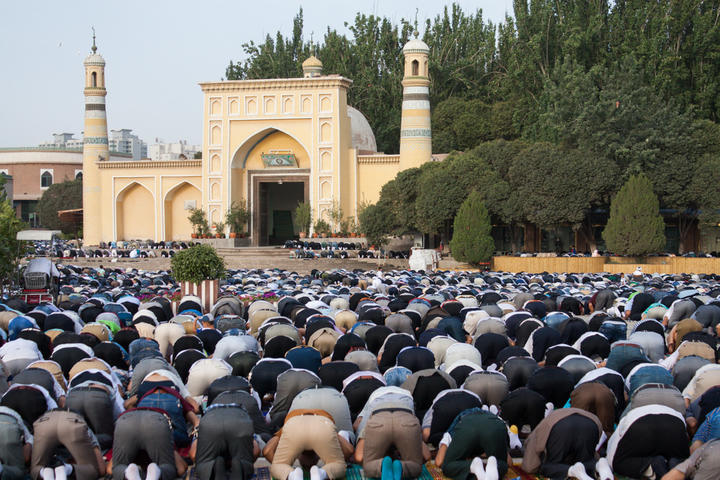
Eid Al-Adha in Almaty
70 days later, I once again witnessed the celebration of Eid. I was in Almaty this time, northeast 2 of Kashgar on the north side of the Tianshan mountains.
I stayed at a guesthouse owned by a Uyghur family. Their children only speak Russian and some English and no longer wear their ethnic clothing. Their diet is still very much Central Asian which is not surprising since food seems to be the last thing people give up while they assimilate to a new culture.
There was no lock down of the streets nor did I have to wake up so early. Almaty's morning was also chilly like the morning in Kashgar. I arrived at the mosque by unlicensed taxi, a convenient form of transportation in Almaty. 3 The mood at the Almaty Central Mosque seemed routine. The Muslims dressed casually with everyday baseball caps where the people of Kashgar would put on slightly finer attire. For Almaty, only some security agents can be seen among the crowds. Many Kazakhs stood at the back and prayed standing. It seemed they were not regular prayers and attended as observers. Women can also be seen in Almaty sitting at the very back. The event in Almaty also drew no tourists and few media. I was the only one among half a dozen with cameras who seems all to be journalists. These journalists also freely walked in front of prayer in Almaty an act unthinkable in Kashgar since the Uyghurs would yell at you to move behind. Even the Chinese police didn't stand in front of the Uyghurs.

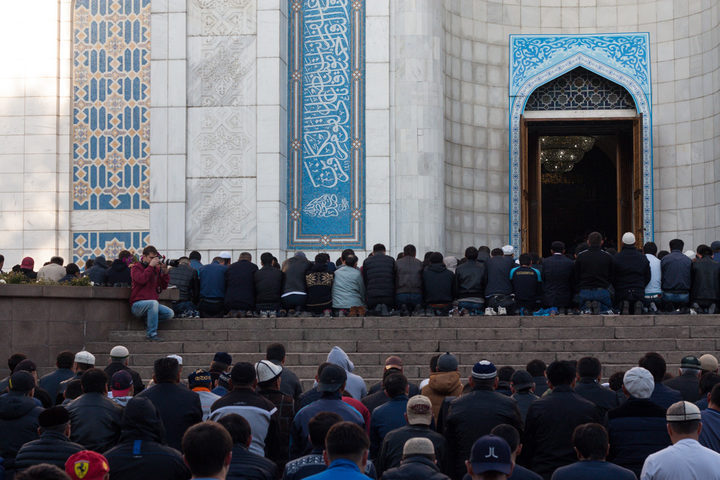
The biggest contrast between the two places can be found after the prayers. In Almaty, few people lingered and for those who stayed they started arm wrestling and a tug and war. In Kashgar the scene was more traditional. Uyghur music was being played on top of the mosque with Uyghur instruments. Men gathered in circles and danced in a way only the Uyghurs know. The central Asians of CIS countries seem to have adopted the Russian culture where the Uyghurs in China have not assimilated, barely able to speak a word of Chinese.
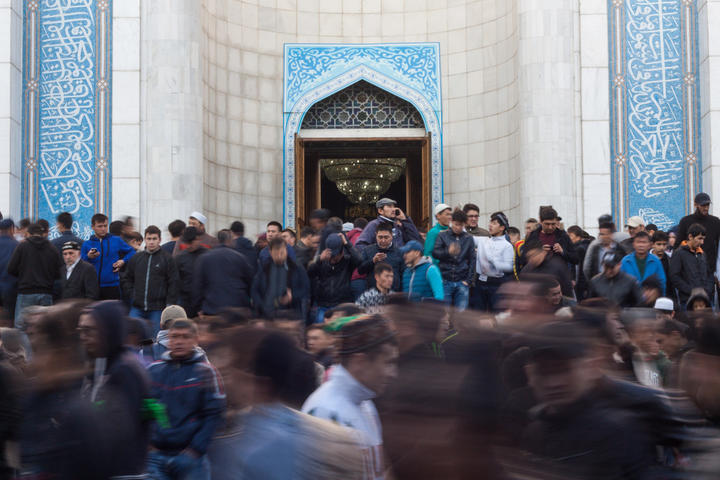
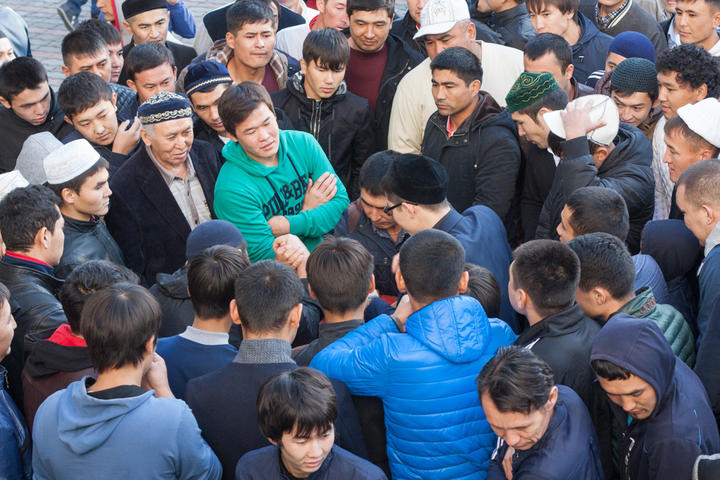
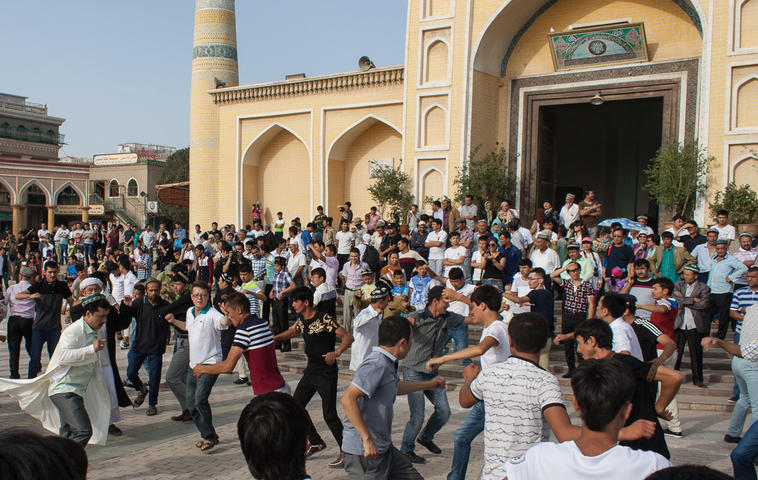
-
Xinjiang Time (UTC+06:00) is used by local Uyghurs as opposed to the Han Chinese who insist on using Beijing time (UTC +08:00) which is the official time zone of the entire country. This is totally disorienting since the Chinese would use Beijing time while the Uyghurs use their local time. Long time ago Kashgar actually used Kunlun time (UTC+05:30) during a time period when China had 5 time zones. [https://en.wikipedia.org/wiki/Historical_time_zones_of_China] ↩
-
To my surprise Almaty is actually slightly east of Kashgar, about 75km east to be exact. It goes to show just how far Kashgar is from East Asia. Air distance from Kashgar to Shanghai is more than to Mecca. ↩
-
Although Almaty have a subway and good bus network it’s easy to flag down a car on any street. Usually 1 out of 3 cars would stop and the rates are very good after a little negotiation. ↩

